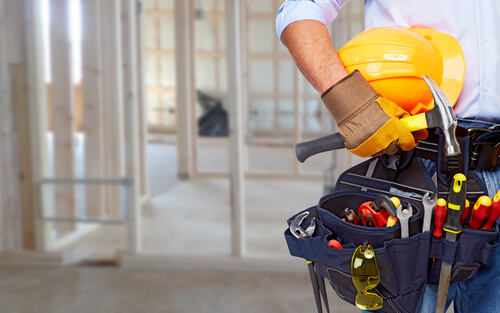Regular maintenance may sound like a burden but it prevents costly home repairs in the long run. If it was only about mowing the lawn it wouldn’t be much of a problem; unfortunately, there is more to it. Doing the key checkups of your home will not only save you money but can save your home and potentially your life. There are hidden dangers lurking in your own house and the only way to avoid consequences is to keep an eye on certain critical areas.
Costly home repairs: Where (bad) surprises lie
Your house needs tender care from top to bottom. And be aware that because you don’t see anything doesn’t mean it’s not there.
Basement can show cracks, signs of water, mold or foundation damage. Remember that mold can cause health issues.
Roofing and Attic. Any water leaking through your roof and into the attic can bring mold, pest and become a electrical hazard.
Fireplace. A fireplace in need of maintenance or repair is a danger you don’t want to toy with.
HVAC. The heating and cooling system needs maintenance in order for you to be comfortable all year round. Defects mean loss of energy and higher utility bills.
Sewer pipes, septic system. Roots from trees around your house can damage your underground pipes.
Wiring/electrical. The risks are not only costly repairs but possible fire or even electrocution.
Termites. They need to be eliminated or else they will eat your house away.
Windows and doors. They can increase your heating and cooling bill or subject your house to water damage. Unsafe doors make you more susceptible to home invasion.
How to prevent costly home repairs with maintenance?
In order to prevent any costly repair or worse, being at risk for floods, fire or health issues, watch for the signs and take action:
Basement
Mold remediation is very important because it is a health hazard; tests must be conducted by a specialist if you suspect (or smell) the presence of mold. Find and fix leaks and ventilate the area properly.
Look for signs of water in crawlspace, for cracks in the drywall or doors not fitting their frame or unlevelled floors. Regularly clean downspouts,make sure they redirect the water at least 10 feet from the foundation. The problem can come from your gutters, they need cleaning regularly.
Roof /Attic
Missing or broken shingles, signs of water damage in attic, broken masonry around the fireplace are issues you need to address.
Inspect your roof and attic twice a year. Unclog your gutters. Check your vents and skylights.
Fireplace
If it smokes when in use or smells when it isn’t, there may be powder or soot in the fireplace.
Install carbon monoxide detector, have a professional check masonry and chimney each year.
HVAC
Look for corrosion or leaks. If the system cycles too frequently, it can trip circuit breaker.
Replace air filters on a regular basis (setting up a reminder on your calendar is a good way to not miss a beat).
Sewer pipes, septic system
Clogs, slow running system, gurgling noises in the toilets or drains will alert you of a problem.
At any sign of drainage problem, rent a sewer snake and clean the pipes; call a professional if there is a foul odor.
Wiring/electrical
Hot outlets, flickering lights or breakers tripping too often are like so many alarm bells.
Check the breaker for corrosion, make sure your lamp bulbs are installed properly and not loose. If you know electrical, you can change the plates yourself but electricity requires a professional because of building codes and dangers related to electrical wires.
Termites
Little piles of wood shavings, mud tubes or discarded wings are a sure sign of infestation.
Call a termite control professional and have any structural damage repaired quickly.
Windows and doors
If you can feel air draft, see cracked caulk or stains around the frames, you can be sure your windows and doors are in need of TLC.
Repair caulk and install plastic insulation around the windows and doors.
There is a whole lot on that list but it is only meant to avoid costly home repairs.These repairs can be costly in many ways, you can avoid excessive expenses by not ignoring problem so long that they become a nightmare.
The “checking” part of the process is totally up to you, once you know what to do; but the “fixing” part should be, in many instances, left to a professional. If you don’t know what to do, call for help.
Your project deserves the Collom Construction quality.
